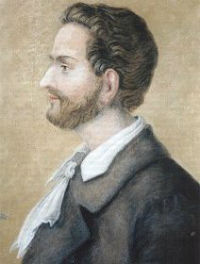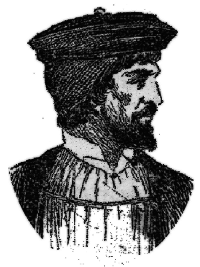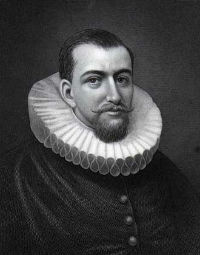For every traveler who returned home to tell their compatriots about their great discoveries, have at least ten mysteriously vanished in the jungles, deserts and glaciers.
Friedrich Leichhardt
The Prussian naturalist Friedrich Leichhardt arrived in Australia in 1842 after a long (and rather haphazard) training in Berlin, London, Paris, etc. Immediately upon arrival, he sailed from Sydney in New South Wales to explore the flora, fauna and farming methods.
Then in 1844, Leichhardt made his first big trip in the Central areas of Australia that began in Brisbane and ended in Port Essington (if you, like us, don’t know much about the geography of Australia, adding that it is about 5000 km). During the campaign the squad was repeatedly attacked by the warlike natives, Leichhardt caught malaria and once almost burned down, fell asleep around the campfire (woken by his smoke from the burning on the head of a hat). But after the campaign he became a national hero, was awarded the Great medal of the geographical society in London.
In 1845, Leichhardt decided to cross Australia from West to East and went to a three-year journey, from which he never returned. Last post by researcher sent a year after the start of the expedition.
It is assumed that all trip participants (there were seven of them: five Europeans and two native guides) were killed during a storm in the Great Sandy desert. Since the expedition was supposed to be a three-year, worried about Leichhardt only in 1850, and in search of went in 1852-m. But what happened, it is never found out.
However, the expedition of Dale Carnegie in 1896, found the aborigines of Great Sandy desert tin matchbox and the seat, presumably belonging to Leichhardt. In 1900, some guns were found in the desert, but not under a layer of sand, and under a layer of river mud. So maybe the reason for the death of Leichhardt became a flood.
Gaspar and Miguel Corte real
In 1503, a Portuguese courtier, Vasco Corte real, sent a ship in search of his brother Miguel Corte real, who the year before went in search of their brother Vasco Gaspar. And he was gone, trying to find a sea route through the Arctic ocean along the Northern coast of North America through the Canadian Arctic archipelago. King Manuel I, decided that enough is enough missing brothers Corte real, Vasco forbade the expedition. What happened with Miguel and Gaspar, remained a mystery.
Vasco, Miguel and Gaspar were the sons of a Portuguese nobleman, Joao Corte real, which, incidentally, may have sailed to America before Columbus, in 1470. Gaspar decided to repeat the expedition of the father, and in 1500 he went on three ships to Newfoundland. The flotilla was caught in a storm and was forced to split up. The two ships successfully returned home, and one that was Gaspar, disappeared. In 1502 Miguel fitted out three ships and went in search of his brother. Ships decided to split up to cover as much territory as possible. The two ships returned home, and the one that carried Miguel, disappeared.
Modern researchers suggest that one or both of the brothers Corte real, passed through Hudson Strait was ice-bound near Labrador.
Vandino and Ugolino Vivaldi
The Genoese brothers-sailors, in 1291 went on two galleys sail aimed across the Strait of Gibraltar to round Africa and sail to India. Both ships disappeared. But there is evidence that they managed to swim to Morocco, as the son Ugolino Vivaldi Corleone went in search of his father in 1315 and heard about him already in Mogadishu.
However, it is unknown whether this information is true, as Corleone announced that travelers lost their ships because of the storm, but fell into the Realm of Prester John (a mythical state, popular among enlightened Europeans in the middle ages).
Everett Ruess
Traveler alone, age 16 studied the deserted spaces of Arizona, Colorado, new Mexico, Yosemite national Park. With his family he has been in touch, sending rare cards, and earning a living selling his landscapes.
Everett went missing presumably in 1934 (at least then the family noticed it and started to worry). He was last seen in the Utah desert wandering lonely with two donkeys. With the exception of native Americans and local cowboys, Everett was practically the first person, have studied these areas.
In 2009, the Utah desert, a grave was discovered. Old Navajo said that it is the grave of Everett Ruess killed two Indians who wanted to take his donkeys. The remains of Everett was sent for DNA examination. But later a dental examination proved that it was not Everett, and some unknown Indian.
George Bass
Naval surgeon George bass was one of the most important figures in the study of Australia. He sailed 18 thousand kilometers, studying the coast of the country, and his journey was performed on a small boat, which he called Tom Thumb (“Tom thumb”), a little bit bath. After the bass has allocated a normal ship, he went to the coast of Tasmania and proved that it is not a Peninsula, as it was believed, and the island. The result is the Strait that separates Tasmania from Australia, called the Strait of Brass.
In 1803, the bass on the ship sailed from Sydney to the coast of South America (presumably to illegally sell the goods). Further, his fate is unknown, he is either caught in a storm and sank or were captured and spent the rest of his life working in a silver mine in Peru.
Henry Hudson
British sailor started his career from cabin boy on Board a merchant ship. In 1607 the Moscow trading company hired him to search for Northern route to Asia. On the ship, “Howell” Hudson reached Greenland and mapped the coast. He came back before reaching the North pole is only 1,000 kilometres, but the following year again went to him and again failed.
He then was employed in the East India trading company on the ship the “halve Maan” went to a New Land. However, because of dissatisfaction with the Hudson team had to change the original course, crossed the Atlantic ocean and along the way discovered the island of Manhattan (later there will be founded New Amsterdam, later renamed new York), went up the Hudson river (named, incidentally, in honor of Explorer). And the way Hudson was never found, but did not leave attempts.
In 1610 under the auspices of the British East India trading company, he again went in search of a Northern route. Hudson explored the coast of Iceland and Greenland, and wintered in the ice, was going to continue the search, which was close to success. But the team rebelled and dropped off the Hudson, his seven year old son, and seven sailors in a rowing boat without food and water.
Frances Moira Crozier
The captain of the British Navy, who committed six research Arctic and Antarctic expeditions. He started his career from the lowest positions on the ship, then was promoted to officer. In 1821 asked in an expedition to find the Northwest passage to captain William Edward, Paripe, where he gained experience of wintering on the ice. Then he served on a ship off the coast of Portugal and in 1831 went in the post commander on the ship “Terror” as part of the research expedition to the shores of Antarctica. The result of the expedition was opened South magnetic pole, crozier was elected a fellow of the Royal society.
In 1845 he again set sail to the shores of the Arctic to try to find the Northwest passage. The expedition had two ships: the flagship “Erebus”, which was led by John Franklin, and the Terror, Francis crozier. In 1847 John Franklin died (he was 62 years — solid for the time age), and crozier led the entire expedition. However both ships disappeared, and the fate of their teams is not known. Wife of John Franklin, using his connections, sent several rescue operations, but has not been found, no ships, no remains of the crew.
By the way, about a crozier in 2007, Dan Simmons wrote a novel “the Terror”, in which he proposed his version of the death of the expedition (no, this is not a spoiler!). Be sure to read, will not regret.


















